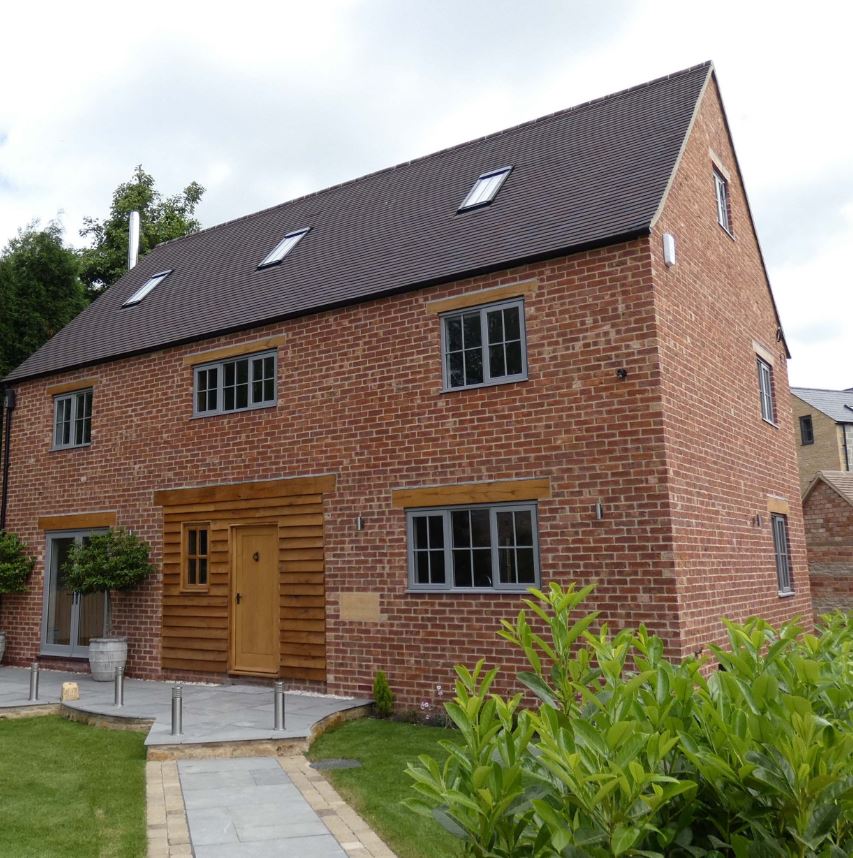Bricks and blocks are fundamental components that have been shaping the skeletal structure of human habitats for millennia.
Historically, bricks were synonymous with units of baked clay but have since evolved to encompass a variety of materials.
These sturdy rectangles of progress are pivotal in the construction of everything from towering skyscrapers to serene suburban homes:
- Historical Context: Tracing back to ancient civilizations, bricks were initially sun-dried clay units.
- Material Evolution: Today, bricks include shale, calcium silicate, and other composites.
- Construction Applications: Bricks and blocks serve as the primary materials for walls, pavements, and numerous structural elements.
Key Takeaway: ☀️ Understanding the composition and history of bricks and blocks provides insight into their enduring importance in construction and architecture.
The Difference Between Bricks and Blocks
When contemplating the materials for construction, the decision to use bricks or blocks is crucial:
-
Size Considerations: The comparatively larger size of blocks translates directly into fewer units required to cover the same area as bricks. This can result in a noticeable reduction in construction time and labor costs. Each block laid is equivalent to several bricks, which means fewer joints and therefore a potentially stronger wall structure.
-
Installation Implications: The size advantage of blocks isn't just a matter of speed. It also reduces the potential for errors during laying, as each unit covers more area and there are fewer opportunities for misalignment. This can contribute to the overall precision and integrity of the wall system.
-
Composition and Variety: Traditional bricks are primarily composed of clay or shale, which is fired in a kiln to achieve its hardness. This process imbues the bricks with their characteristic durability and weather resistance. Blocks, on the other hand, are often a concoction of cement, concrete, or aerated concrete. The choice between aerated and solid concrete blocks will depend on the specific needs of the project, as aerated blocks are lighter and provide better insulation while solid blocks offer greater structural strength.
-
Load-Bearing Abilities: In the realm of load-bearing walls, concrete blocks are the heavyweight champions. Their robustness is designed to shoulder the burden of the structure above. Bricks, while strong, are typically relegated to less strenuous roles in non-load-bearing walls or veneers, though engineering bricks can be used in structural applications due to their increased strength.
-
Insulation Attributes: Insulation is another arena where blocks excel. Their larger volume allows for a greater air cavity within walls, which can be enhanced with additional insulation. This is particularly the case with hollow blocks, where the voids within can be filled with insulating material, significantly increasing the wall's R-value.
-
Aesthetic Flexibility: While bricks have a timeless appeal, offering a classic look that is versatile enough to complement any design, blocks often require a finish or facade. However, this necessity opens the door to a wide range of aesthetic options, as blocks can be easily rendered or clad with a variety of materials, offering the architect a broader canvas upon which to realize their vision.
Exploring the Types of Bricks and Blocks
Diversity in construction materials allows for flexibility in design and application. Each type of brick and block holds its own set of characteristics suited for different aspects of building:
- Brick Varieties: Includes fired clay, sand-lime, engineering, and more.
- Block Varieties: Encompasses solid and hollow blocks, each with distinct uses.
-
Bricklaying Basics: A foundational skill in construction, requiring precision and understanding of mortar application.
Facing Bricks vs. Standard Common Bricks
Facing bricks and standard common bricks may serve the same function, but their distinctions make them suitable for different aspects of a building's façade and structure.
- Aesthetics: Facing bricks are designed with a smooth, appealing finish for external walls.
- Durability: Common bricks are built for strength, not necessarily for show.
- Usage Considerations: The choice often depends on whether the brick will be visible or serve a structural purpose.
Key Takeaway: ☀️ Selecting between facing bricks and standard bricks often depends on the balance between aesthetic requirements and structural integrity.
Fireproof Qualities of Bricks and Blocks
In a world where safety is paramount, the fireproof qualities of bricks and blocks can be the deciding factor in their selection for construction projects.
- Concrete Blocks: Innate fire resistance due to their composite materials.
- Fired Bricks: High fire resistance attributed to their kiln-fired production process.
- Fire Ratings: Most bricks and blocks meet the A1 fire rating, meaning they are non-flammable.
Key Takeaway: ☀️ The inherent fire-resistant properties of bricks and blocks make them reliable choices for safe construction practices.
Concrete Blocks in Building Construction
Concrete blocks are a mainstay in modern construction, providing versatility and support for a variety of building requirements.
- Hollow Blocks: Ideal for insulation and lighter constructions.
- Solid Blocks: Preferred for their high load-bearing capacity.
- Aerated Blocks: Known for their light weight and good insulation properties.
- Concrete Stretcher Blocks: Used primarily to combine masonry units.
Key Takeaway: ☀️ Understanding the functional advantages of different concrete blocks can greatly influence the efficiency and effectiveness of a construction project.
The Benefits of Using Bricks and Blocks
Bricks and blocks have been a preferred building material for centuries due to their numerous inherent benefits. From ancient mud bricks to modern aerated blocks, each advancement has carried forward the advantages of its predecessors while adding new ones.
- Strength: Both bricks and blocks are recognized for their impressive load-bearing capabilities.
- Durability: These materials can withstand severe weather conditions and degradation over time.
- Insect and Fire Resistance: Naturally resistant to pests and fire, making them ideal for long-term construction.
- Maintenance: Require minimal upkeep compared to other building materials.
- Weight and Insulation: Blocks tend to be lightweight and offer good thermal and acoustic insulation.
Key Takeaway: ☀️ The resilience, low maintenance, and protective qualities of bricks and blocks underscore their continued relevance in modern construction.
Thermal and Acoustic Properties of Bricks and Blocks
Thermal and acoustic insulation are key considerations in building design. The R-value, a measure of thermal resistance, plays a significant role in determining the energy efficiency of a structure.
- Insulation Metrics: R-values indicate the insulating effectiveness, with higher values denoting better insulation.
- Brick R-Values: Common and face bricks have R-values of 0.80 and 0.44 respectively, providing moderate insulation.
- Block R-Values: CMUs have higher R-values, ranging from 0.80 for 4” blocks to 1.28 for 12” blocks.
- Comparative Analysis: Stone materials like granite and sandstone have lower R-values and thus provide less insulation.
Key Takeaway: ☀️ The R-value is a critical factor in material selection for energy-efficient building, with bricks and blocks offering a range of insulation properties to meet different needs.
Why Choose Blocks Over Bricks in Construction?
While bricks have their merits, blocks can often provide superior benefits for certain construction scenarios. Their size and composition afford them specific advantages that make them preferable in many modern building designs.
- Size Efficiency: The larger size of blocks can lead to faster construction times.
- Weight Advantage: Being lighter than bricks, blocks contribute less to the overall load of the structure.
- Design Flexibility: Hollow blocks can be filled with insulation or other materials to enhance their functionality.
Key Takeaway: ☀️ The efficiency and versatility of blocks often make them the material of choice for projects that require quick construction times and flexible design options.
Conclusion
Bricks and blocks each carry a legacy of strength and reliability that has stood the test of time. They continue to serve as the backbone of construction projects worldwide. As we've explored, each type comes with its unique set of advantages that cater to different aspects of building and design.
When planning your next construction project, weigh these factors carefully to ensure you select the material that best fits your structural and aesthetic requirements. Remember, the right choice can lead to a safer, more efficient, and beautiful building.

